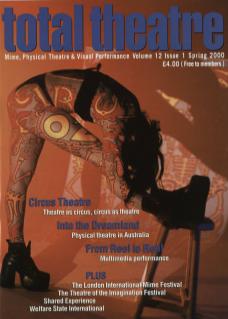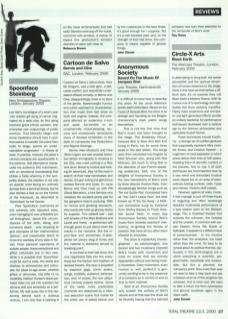In attempting to bring both the sense perceptible and the spiritual dimension of human existence to the stage, Circle-X Arts have set themselves a difficult task. It's no surprise they call Black Earth a Mystery Drama. With its curious mix of hi-technology and spirituality this show certainly mystifies. Flashy video projections and computer and light-generated effects provide an unlikely backdrop for performance techniques developed over a century ago by the German philosopher and spiritualist Rudolf Steiner.
These techniques include Eurythmy – a strange set of codified gestures that supposedly represent life's invisible forces; and Creative Speech – a turgid form of vocal expression in which actors deliver their lines at half-speed, divesting them of dramatic content in the process. And to cap it all both techniques are accompanied here by a very weird and discordant musical score played live on an array of extraordinary-looking cymbals, bells, harps and chimes. Esoteric stuff indeed.
However, against all odds, Circle-X Arts manage to pull off three hours of beguiling and often ravishingly beautiful multimedia performance of a type seldom seen on the Western stage. This is ritualised theatre that explores the unknown, the invisible and the unseen. In common with certain Eastern forms like Butohor Kathakali, it appeals to a different level of consciousness – to the intuitive rather than the analytical, the heart rather than the mind. It's easy to be cynical about its spiritual themes, particularly in this technological era in which everything is scientific, programmable, classifiable and measurable. But this is precisely the company's point. Now more than ever we need to take a step back and ask ourselves what all of this progress has achieved. And at what cost. We need to take a return trip from cyberspace and ground ourselves again in the black earth.

